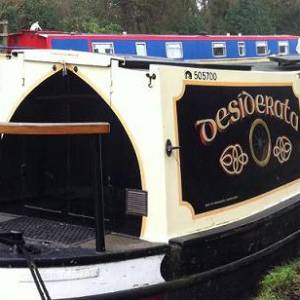
3 mistakes to avoid when buying a canal boat
So, you’ve got your finances sorted, you’ve browsed dozens of pictures, and perhaps some Boatshed videos too. You’ve decided between a cruiser or trad, wide-beam or narrowboat and you’re ready to ‘go barge’. But before you buy your first canal boat use our three point check list to make sure that when you take the plunge it’s all plain sailing. (Have I overloaded you with watery metaphors yet?!)
1. Research the running costs
You may have budgeted for loan repayments and insurance costs but do you know how much you are likely to spend on diesel? Will you have marina fees and do you know how much a cruising licence is for the size of your boat? If you are planning on travelling England’s rivers as well as the waterways run by the Canal and River Trust you may need more than one licence. A Gold licence can be more economical than separate licences from different navigational authorities and is available from CRT. The website Living on a Narrowboat offers a free version of Narrowbudget, the world’s only budget calculator designed specifically for narrowboat owners. It will help you to consider all of the extra costs you’re likely to incur when buying and maintaining a narrowboat.
2. Be safer than a safety certificate!
Your boat should come with a valid Boat Safety Certificate but did you know this does not include checking for smoke alarms or carbon monoxide alarms? The Boat Safety Scheme, or BSS, is a public safety initiative owned by the Canal & River Trust and the Environment Agency. Regular boat inspections help to minimise the risk of boat fires, explosions, and pollution. However, it is also advisable to purchase a smoke alarm with ‘hush’ button and a carbon monoxide alarm. Read more about how a carbon monoxide alarm saved my life.
3. Moor where you like?
Last week the Daily Mail published an article claiming that a cash-strapped family saved a fortune by selling their house and moving on to narrowboat. However, living on a boat is not necessarily a cheaper option and if you do not have a home mooring you will need to travel every 14 days to a new location to comply with the Canal and River Trust guidelines.
If you plan to keep your boat on a mooring check out the prices and availability of moorings in your local area. These can vary widely depending on facilities and location. For example moorings in the north of England are significantly cheaper than those in central London. If you plan to continuously travel on your boat consider how you will travel to any work or study commitments while on the move.
Now that you’re well-prepared you are ready to view the boat of your choice on one of our 15 brokerage websites worldwide. The Boatshed BoatFinder system allows you to enter the specification for your ideal boat, and then forget about it! We'll do the rest.
You may also like:
How to buy a boat – the process / Thinking of selling your boat? / Boatshed registers 500,000th customer! / New Boatshed brokerage opens in Cyprus / Get started with your own Boatshed business / More news articles and stories.
See when the next boat auction is.
New here? Follow us on Facebook or Twitter to hear of new listings, and regular boating, sailing and brokerage news.

